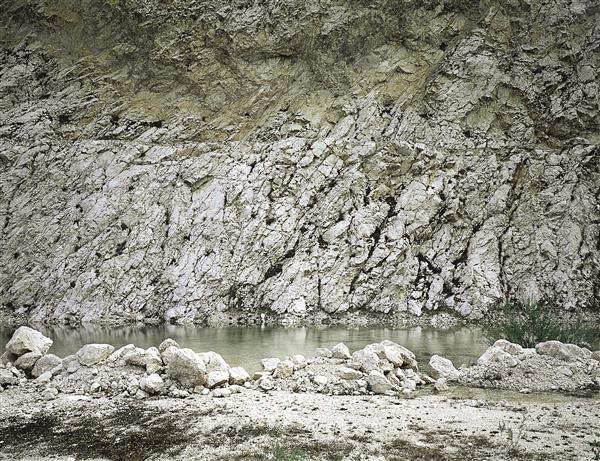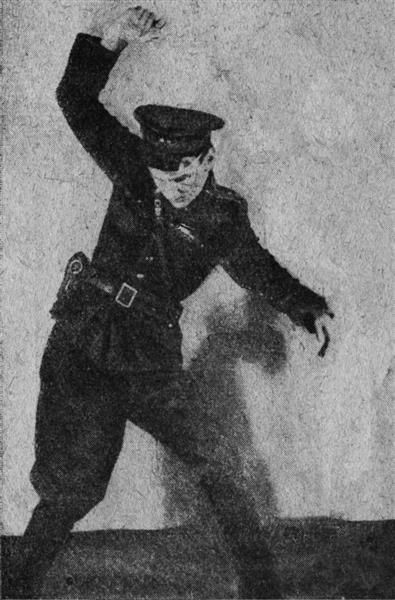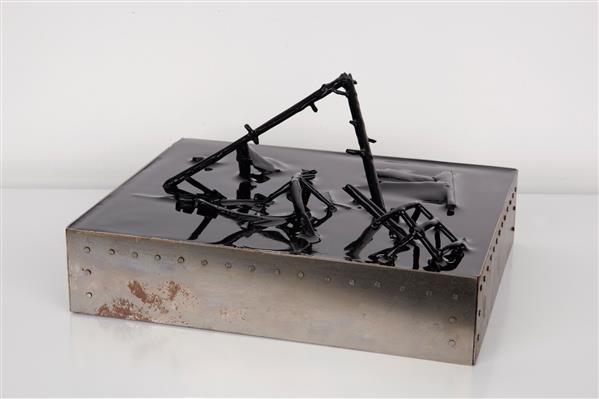Gartenpavillon Stift Melk. Fresko von Johann Wenzel Bergl, Nr. 1–4
Margherita Spiluttini
series of 4 C-prints
edition 1/5
each 80 × 100 cm (framed)
2008
Acquisition 2009
Inv. No. 0194 abcd
Johann Wenzel Bergl (1718–1789) does not rank among the customary stars of Austrian painting though his original and manifold interpretations of exotic motifs definitely excite admiration today: we come upon luxuriant vegetation with an abundance of fruits, unfamiliar – often strange – animals, mollusc shells, natural treasures of all kinds. From 1763 to 1764, Bergl decorated the Baroque garden pavilion in the park of Melk Monastery, a venue of summery pleasures and festivities for the monks and their guests, with frescoes. The entire eastern hall is devoted to the subject of the New World; opposite the entry we see the arrival of the three ships Niña, Pinta, and Santa Maria.1 Bergl embedded the scene in a profusion of animal and plant species. He achieved a complete illusion, with the boundary between inside and outside gradually blurring. The balustrade, delusively hung with arrangements of flowers and plants, remains as the last architectural element.
It is all this and much more Margherita Spiluttini captures in her four photographs.2 The unique clarity of her photographic approach leads us into the rooms and leaves us dumbfounded. Her work reveals the boundaries of the hall and yet transcends them. By showing the windows and doors, particularly the almost one-meter-wide inner faces, the photographer lends special depth to the room; the individual volumes are set off irrespective of all shortenings. Spiluttini is not just concerned with these volumes’ representation, however, but with establishing a photographic reality of its own. To guarantee its lucidity, the pictures had to be optically attuned and orthogonally rectified. This photographer’s art is not one of reproduction, but lies in the creation of new orders and interior adjustments. It is the composition of new rooms opening themselves to the viewer that reveals Margherita Spiluttini’s mastership. Bergl’s illusionistic Rococo painting with its perspectival delusions and trompe l’oeil effects, which transforms the architecture into a framework, turns into another picture. The rationalized perspective facilitates a configuration of the visible for the observer, which couples Baroque imagination and present-day reality.
Heike Maier-Rieper, 2011 (translation: Wolfgang Astelbauer)
1) This hall and Bergl’s frescoes inspired Christian Philipp Müller to conceive his sculpture The New World for the gardens of Melk Monastery in 2006; cf. Christian Philipp Müller, The New World, since 2006.
2) Two other works by the artist are to be found in the evn collection since 1998.
Continue readingPublications
evn collection. 2006–2011, Cologne 2011, p. 142–147


